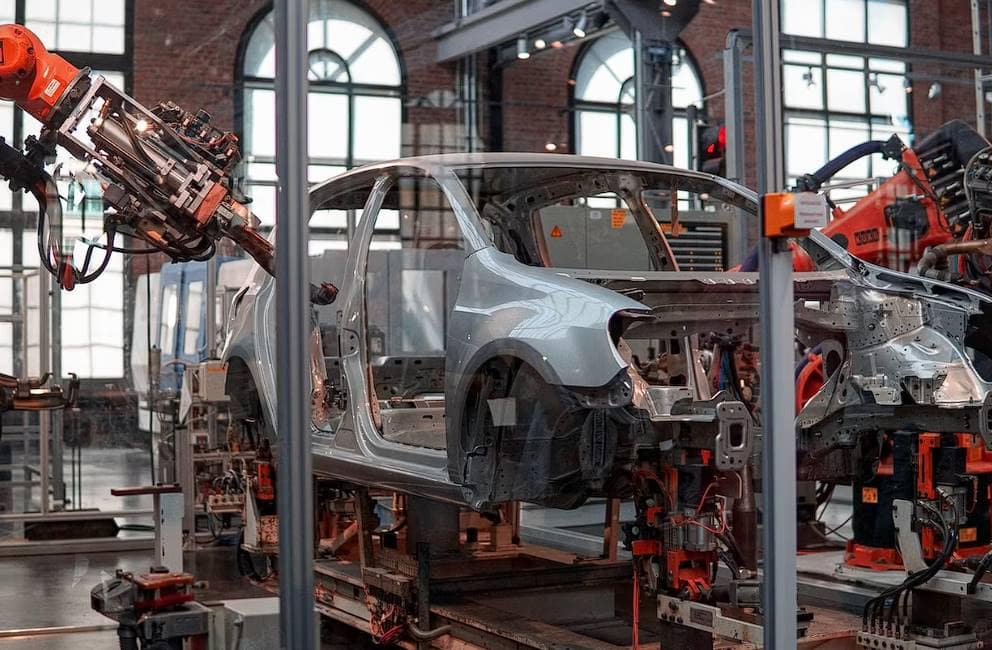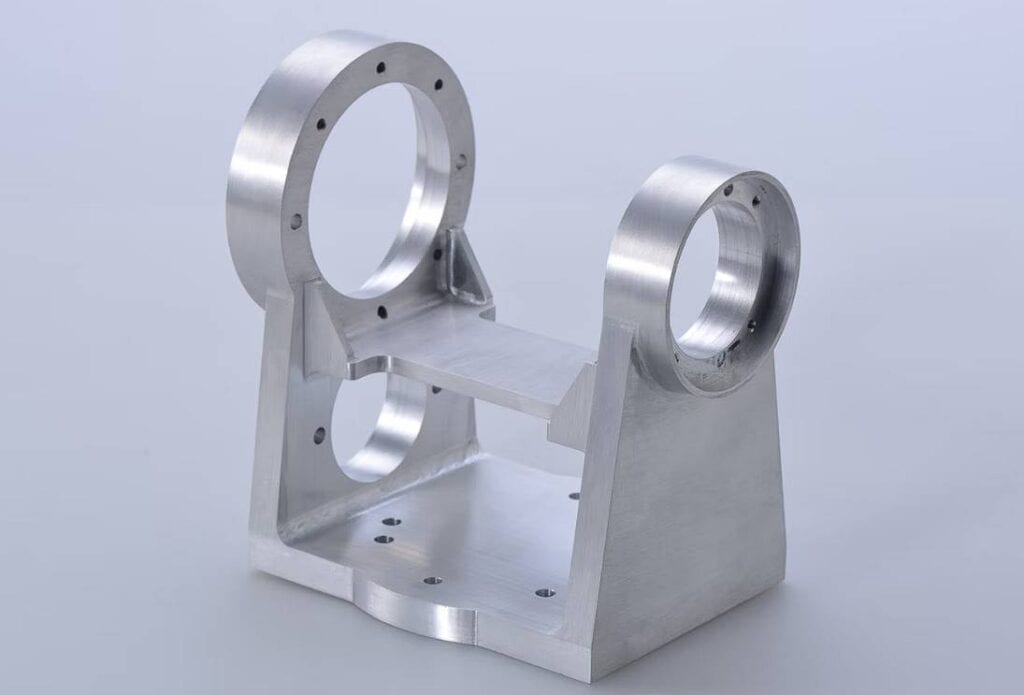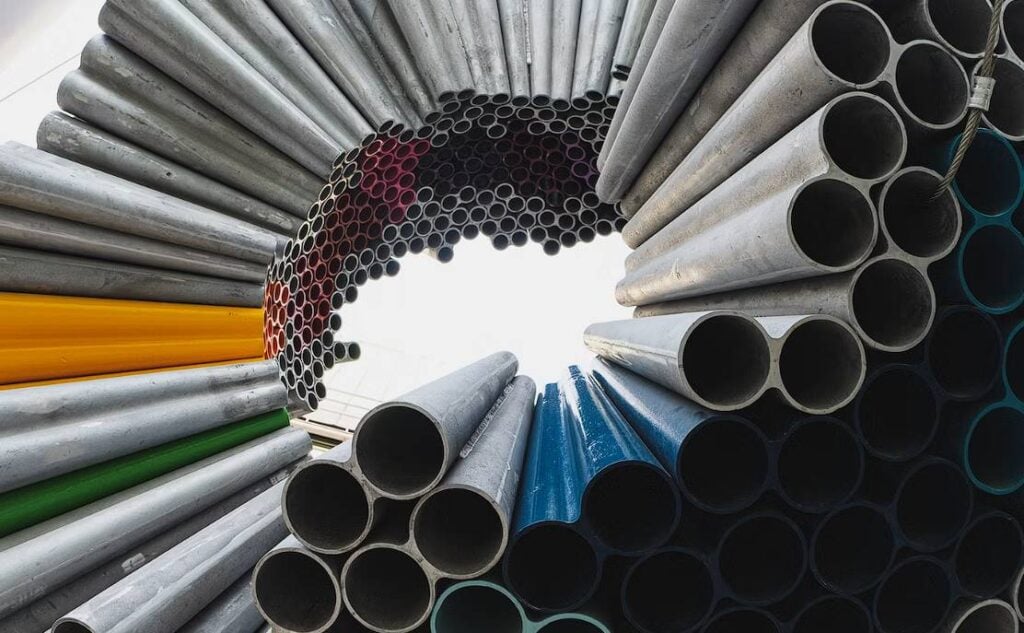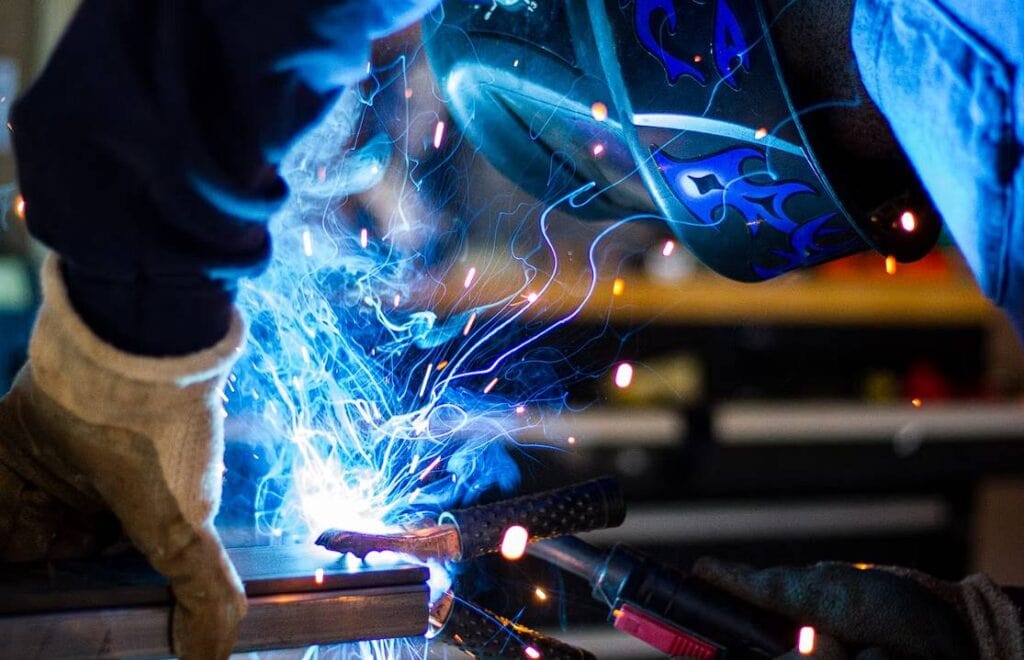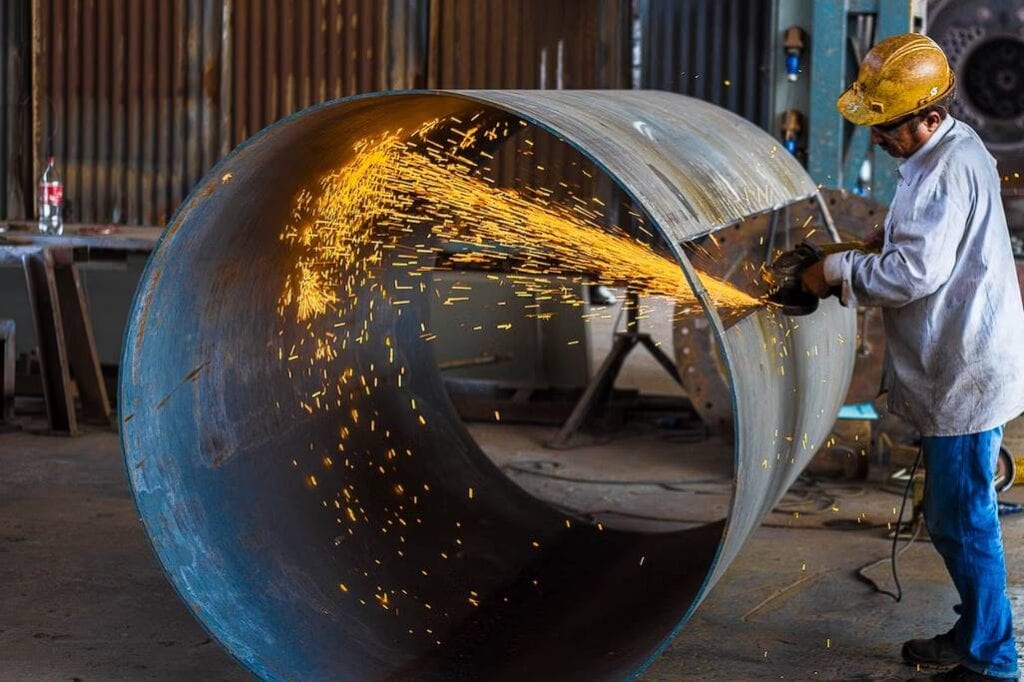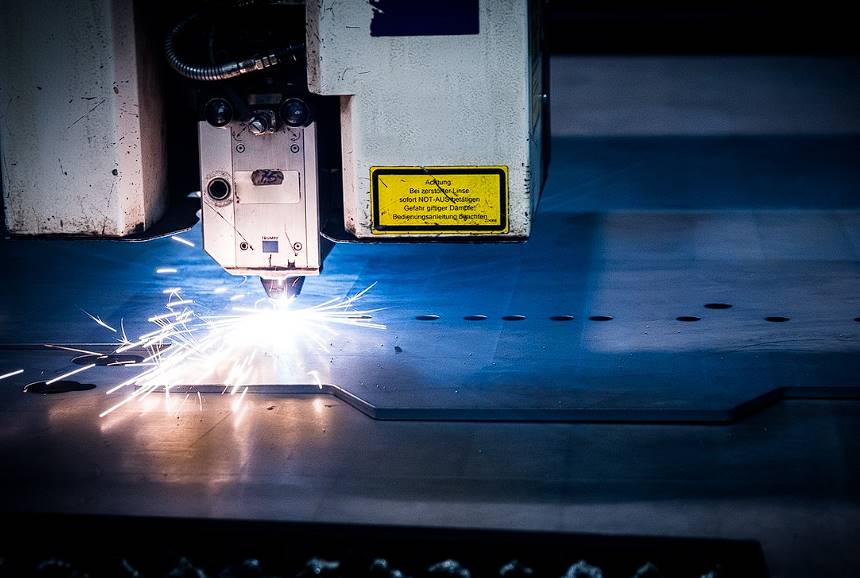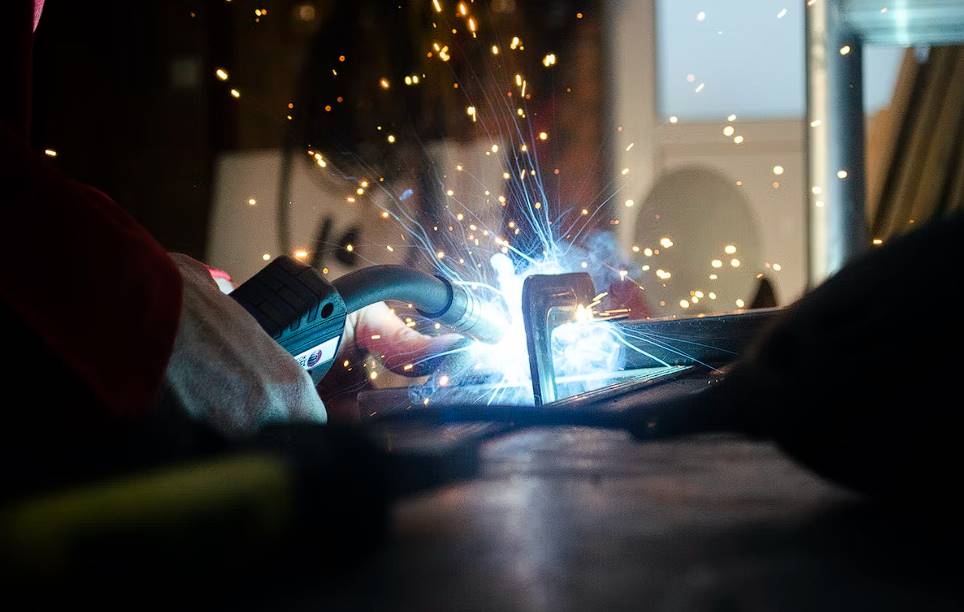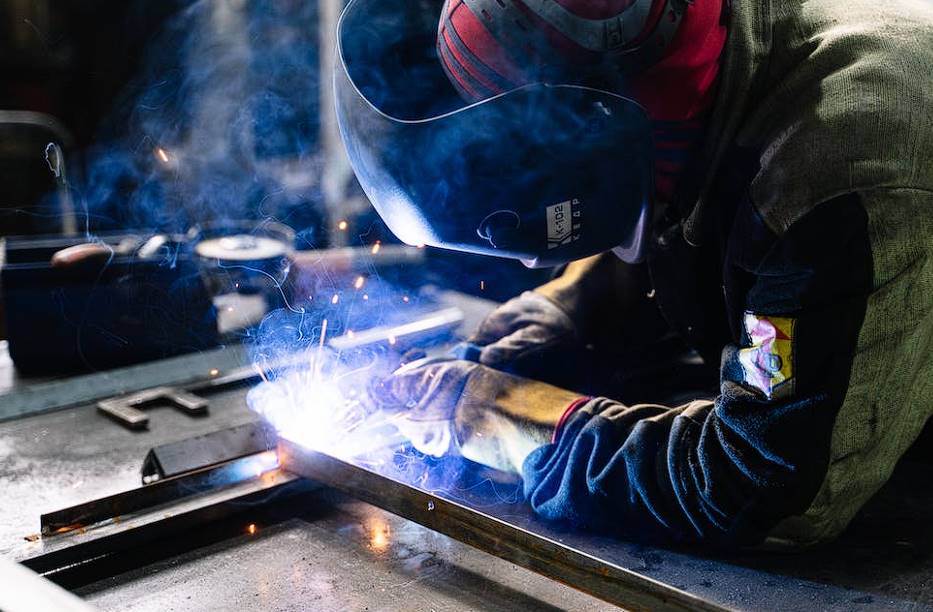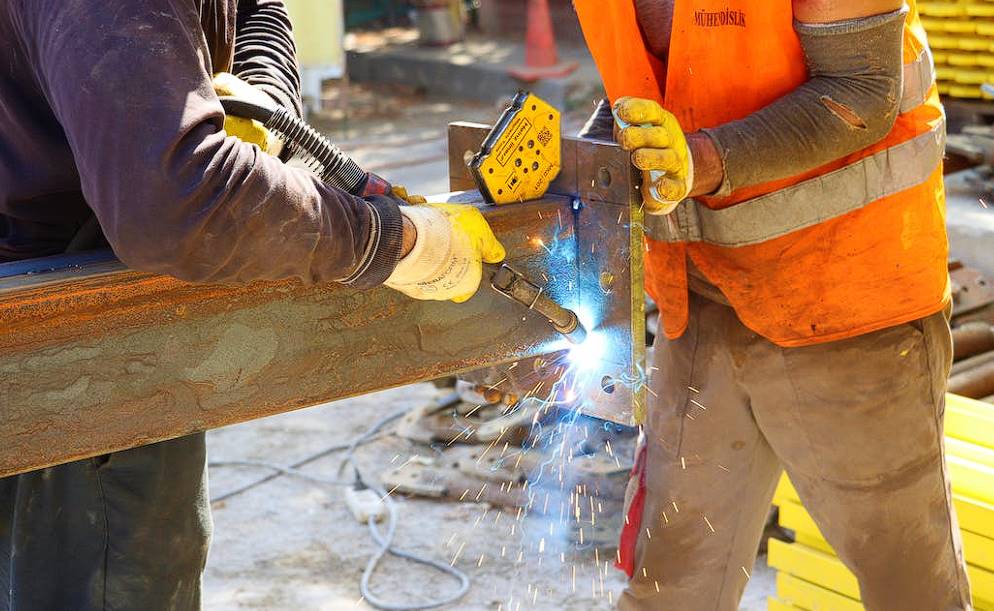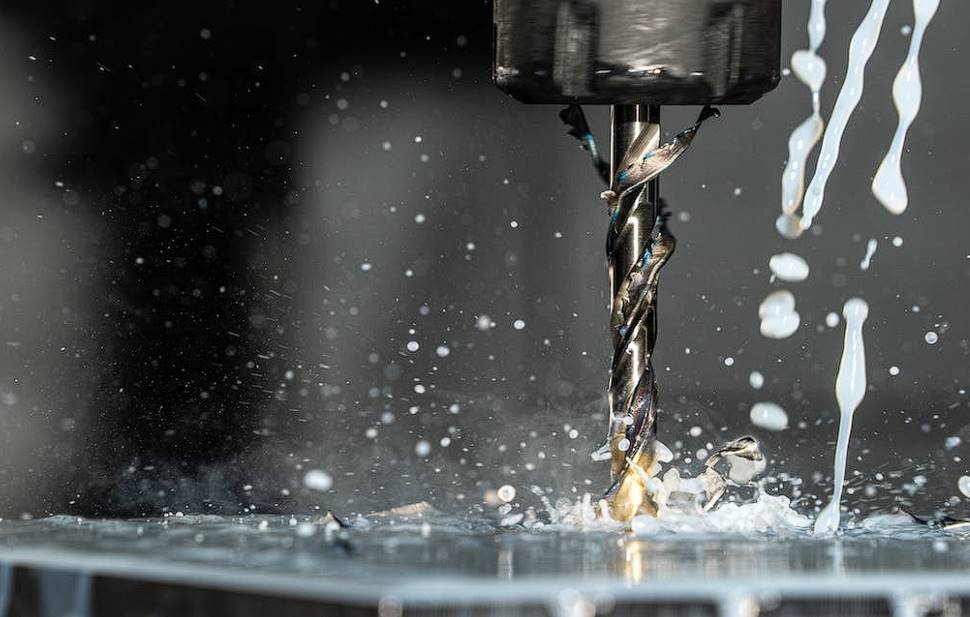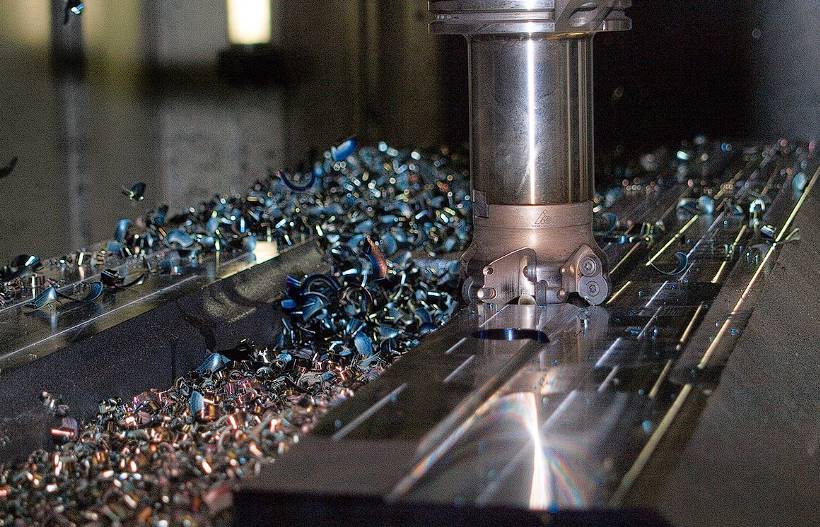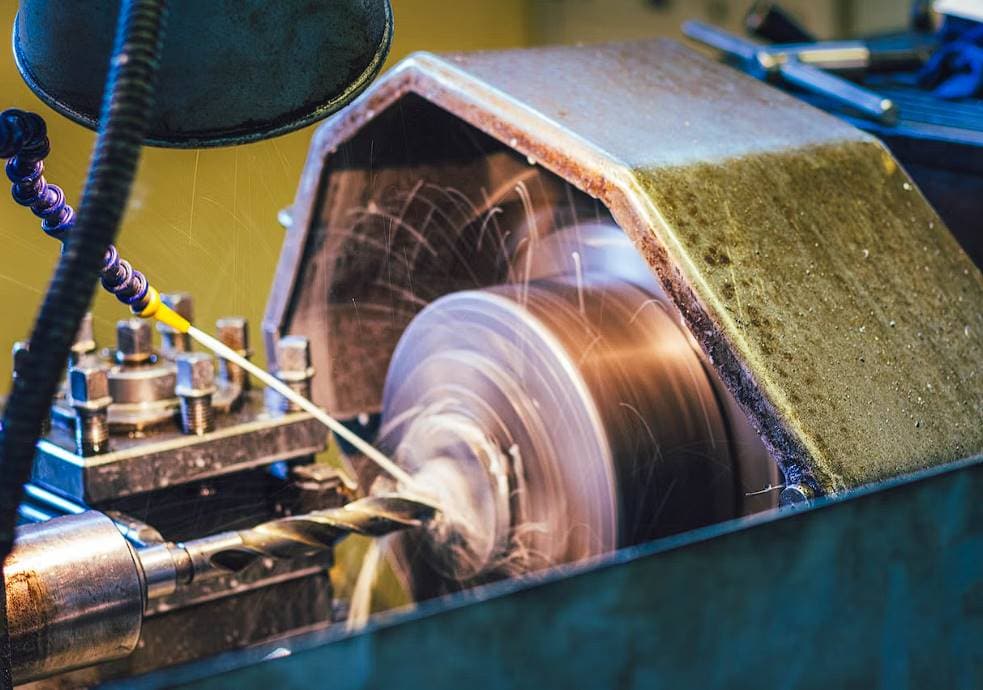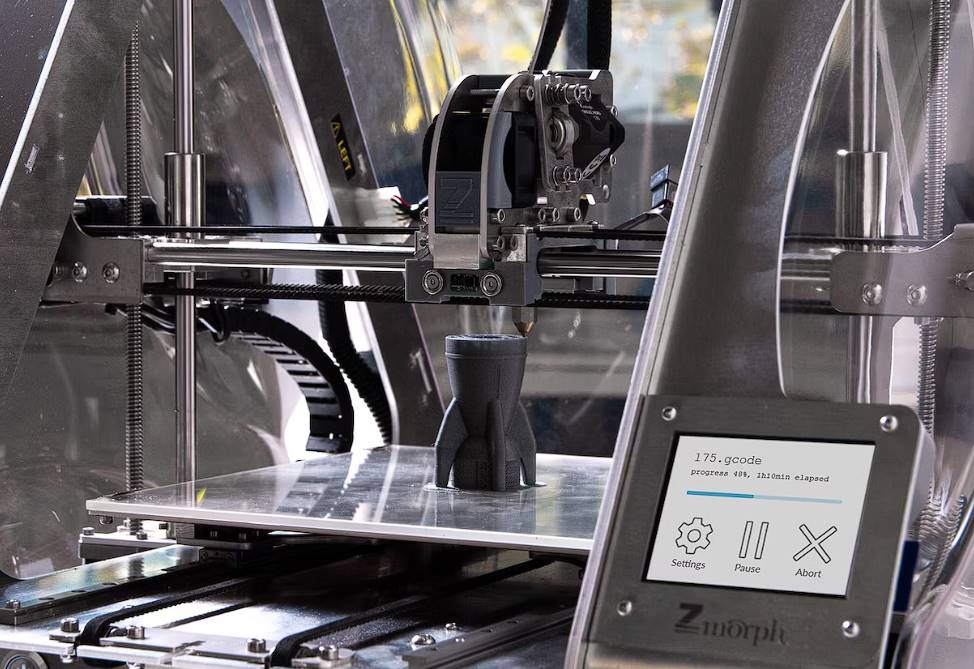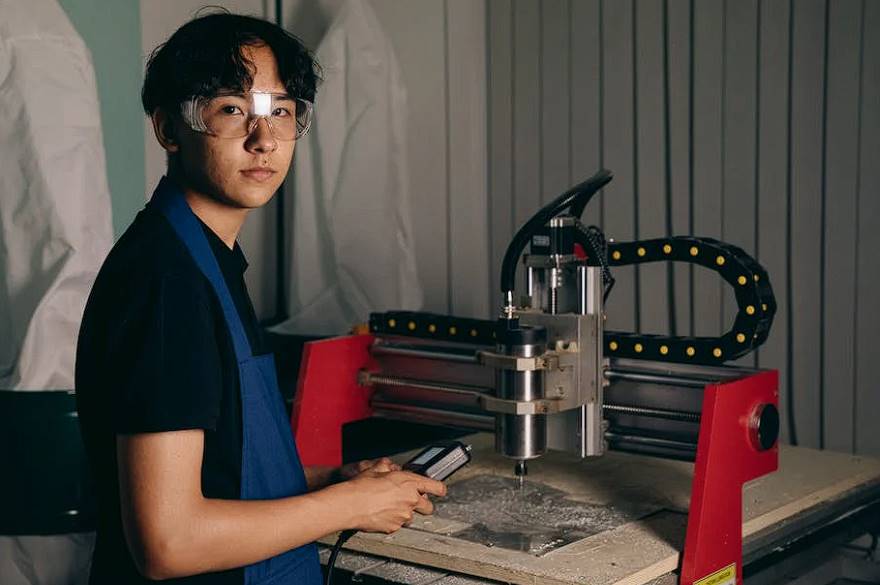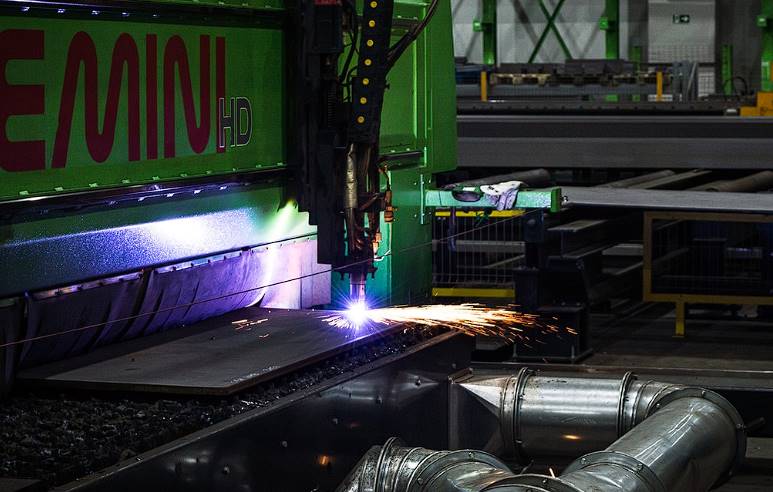CNC machining is a technical marvel that has changed how many industries produce high-precision components and complex designs in today's fast-paced production world. CNC machining is the backbone of several industries, from automotive and aerospace to medicine and electronics, allowing them to attain unprecedented efficiency and accuracy. This article delves into the fascinating world of computer numerical control (CNC) machining, examining the various sectors that rely on CNC's ability to spur creativity, expedite operations, and produce superior outcomes. Join us as we explore the exciting fields that have benefited from CNC machining.
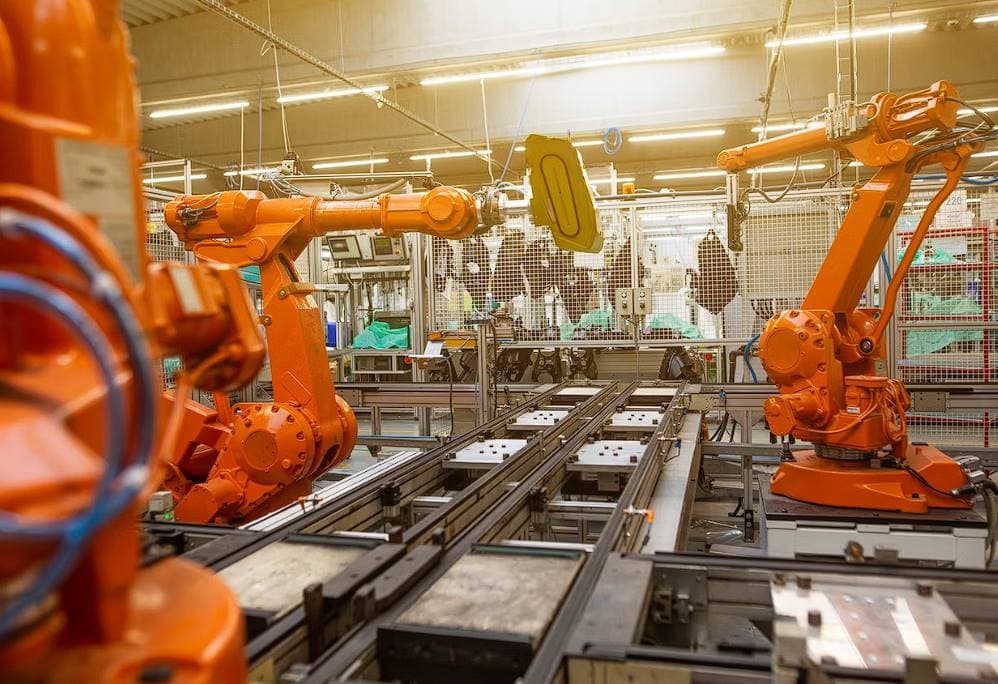
The Process of CNC Machining
A three-dimensional object can be created from a two-dimensional drawing using computer numerical control (CNC) software and machinery. As subtractive manufacturing, this method involves starting with a solid block of material and having machines carve away excess until the desired shape is revealed. However, thanks to computer programming aiding the entire procedure, experts can precisely produce things.
The first step in any CNC job is drawing out the blueprints in a CAD programme. While 3D software allows designers to make almost anything, they must consider material requirements and CNC machine constraints to ensure the final product is satisfactory. Curved cuts, for instance, are impossible for machines to imitate, and rigid materials sometimes result in the desired form.
The programmer uses CAM software to convert the design into a digital format that the CNC machine can read. Next, machinists load the machine with the desired material and check that the CNC machine has the necessary equipment. The final step is for the CNC programme to instruct the machine to manufacture the item.
While computers can handle much of the production process independently, machinists are still usually needed. For example, machinists may need to pause the process to rotate certain sections when working with unusual or complicated machinery. Sometimes, machining is just the first step before adding hand-applied details.
Machinists can generate CAD designs in a matter of days, which speeds up the entire CNC manufacturing process. Because CAD designs may be easily modified, 3D models or prototypes can be quickly created, tested, and fine-tuned. In addition, it takes little time to remove chunks of material that already exist. CNC machines can also be integrated into an assembly line, allowing for the simultaneous production of several items or all components for a single product.
CNC machining is used in which industries?
To help you better grasp CNC machining's many applications, we'll go through some of the industries and production methods that use it.
Aerospace Industry
CNC machining and the aerospace sector have grown up together. CNC machining processes owe a great deal of their evolution to the demands of the aerospace industry. The aerospace sector constantly develops strong materials for making tools and other devices.
Most of this gear is designed with concerns like security and quality assurance. Therefore, there is an absolute necessity for precise machining. CNC machining is a perfect addition to the list of requirements. A few examples of CNC-made aircraft components are:
- Antennae
- Airfoils
- Landing gear
- Bushings
- Manifolds
- Electrical Connectors
- Suppression Materials of Radiofrequency
Automotive Industry
CNC machining is widely used in the automotive industry. As an integral aspect of the automobile industry, CNC machining has many applications, from R&D prototyping to mass production.
CNC milling and lathe machines can make anything from large engine block components to small gears and panels. This machinery is often employed in the automobile sector for its many uses.
Even a single internal combustion engine requires several CNC machining stages. First, the engine block's cylinder assembly is created by machining massive metal blocks into individual cylinders and pistons.
Examples of CNC-machined auto parts include the following:
- Gearboxes
- Axles
- Components for motor vehicles
- Valves
- Blocks of Cylinders
- Instrument displays
- Pressure gauges for gasoline
Marine Industry
The global reach of the marine industry's products makes high-quality craftsmanship necessary. During the mass manufacture of boats and other forms of water transportation, quality control and following production deadlines are only possible to achieve with the utilisation of manufacturing processes that are fully automated. Just one other technique, besides CNC machining, allows for this.
Almost all boat parts are manufactured using computer numerical control (CNC) mills, lathes, electrical discharge machining, and other techniques. The hull is the basic structure of a boat, but it also has internal fittings and furnishings. CNC programmes produce the following parts for the maritime sector:
- Buildings with Decks
- Marine architecture
- Cuts and Pieces of Ribs for Joints
Home fixtures, including kitchen countertops, that are strung together
- Closets and Cupboards
- Circular benches
Electronics Industry
CNC machining is used in the electronics sector during the prototyping and production stages, much like in the car industry. CNC machining has many advantages in the electronics industry, including its ability to reliably manage construction on a tiny scale.
CNC machining is widely employed in the electronics industry, and one example is the aluminium or stainless steel used in the construction of Macbooks and iPhones. They are made with computer numerical control milling machines and routers. But CNC isn't just for the casings of our consumer electronics; it can also be used to make the inside mechanisms.
- Elements of technology
- PCBs
- Housings Jigs
- The Production of Semiconductors
- Silicon wafers
- Pipelines for supplying gas
- Flexible solder masks
- The Carrier Wafer
- Heat dissipators
Smartphones
Even though cell phones are electronics, the importance of CNC machines in their production merits particular attention; the vast majority of today's smartphones are built using computer numerical control (CNC) manufacturing methods.
For instance, CNC machining using glass milling machines is used to create the touch-sensitive screens of smartphones. Displays for smartphones and other electronics must be capable of showing fine surface textures. Only computer numerically controlled (CNC) machines can produce the necessary quantity.
Here are some of the components of smartphones that were manufactured using computer numerical control (CNC) software and machines:
- The metal and plastic casings of smartphones.
- Phone Covers
- Displays that respond to touch
- Mirrors in the back
- Decoration engraving
- Accessories that work with it
- Components housed within the structure
Defense Industry and Military
Similar requirements exist in both the aerospace and defence industries. These industries rely on sophisticated machinery that can't run on cheap parts to continue producing innovative materials and technologies.
CNC systems have various uses in various industries, from complex personalised designs for weapon bodies to interior components of a missile. Some examples of products created using computer numerical control machines are listed below:
- Rotor blade bearings
- Couplers
- Transportable and fixed seat structures
- Clamshells
- Flanges
- Aspects of a transmission
- Ingredients for a Rocket
- Parts for a helicopter
- Locking rings
- Equipment for lifting ammunition
Healthcare Industry
Employing computer numerical control (CNC) systems in the medical field may surprise some. However, computer numerical control machining has several potential uses in the medical field. Rapid tooling for injection moulds and the production of medical supplies are two examples of how CNC machining is used in the medical and healthcare sector. But, then, tools like face masks are manufactured by injection moulding.
The precision and smoothness of their surfaces are also crucial considerations for medical equipment. Bone screws and plates are two examples of such devices implanted in patients and left there permanently. As a result, making ensuring the patients are comfortable is crucial.
Injection moulding can be used to make some plastic parts, but CNC machining is required for all metal components and sophisticated ones. CNC machines are used to make a variety of components in the healthcare industry, including:
- Bone anchors
- Plate of bone
- Medical Equipment
- Cutters
- Clamps
- Forceps
- Holders
- Pacemakers
- Blades
- Prosthetics
Energy Industry
The oil and gas industry is just one segment of the much larger energy sector. In actuality, the energy industry is still growing due to progress in green energy and other forms of alternative energy. Tools and equipment used in the energy business rely heavily on CNC fabrication.
For instance, precision CNC machining is essential to ensure that the blades of wind turbines can spin freely in the wind. CNC face milling machines create bearings, blades, and other parts. Moreover, CNC machines manufacture parts for the nonrenewable energy infrastructure of oil refineries and gas pipelines.
Some typical CNC machining uses in the energy sector are listed below.
- Pistons
- Valves
- Cylinders
- Blades for turbines, rods, and pins
- Bearings
- Water power plants
- Containers for Generators
- Bushings
- Stands for solar panels
Dental Equipment
Although the dental industry is a niche within the medical and healthcare sector, it is a significant purchaser of CNC machined products due to the wide variety of specialised parts it uses. In addition, it employs a wide range of CNC machining methods to produce a selection of components.
Dental prostheses, like other dental equipment, require precise machining to fit the allotted space. End mills and CNC drilling machines are two types of CNC equipment frequently utilised in the dental industry. CNC-machined products in the dental industry include:
- Artificial teeth
- Caps, bridges, and orthodontic trays for your teeth
- Implants for the Crown with a Telescope
- Anchoring framework for implants Abutment
- Denture inlay core with a screwed-in metal bar
Niche Manufacturing
Smaller manufacturing sectors are distinct from the giants above. However, these factories are modest and rely heavily on CNC machining to produce high-quality components.
Jewellery
CNC machining is widely used in the jewellery industry for engraving and etching. CNC milling machines, lathes, routers, and laser engravers are all used in the jewellery industry. In addition to aiding in producing and shaping metal jewellery, a CNC machine for the industry can be used for polishing and grinding.
In the jewellery industry, CNC machines produce a variety of products, including:
- Rings Molds
- Moulding prototypes
- Engravings
- Carved Marble Faces
- Cleaning and buffing jewellery
Shoes
Shoes are not made with CNC machines. But it makes metal moulds used as dies to make the pattern on the bottoms of shoes made of rubber. A CNC machine can also engrave the company's name and logo.
Signage
In terms of aesthetic options and materials, the signage industry has come a long way in recent decades. This sector often uses materials such as wood, aluminium, plastic, brass, acrylics, sheet metal, engineering and foam. Each project requires a unique form of these materials, which are shaped using moulds.
This is made possible by computer software operating on a computer numerically controlled (CNC) machine, which can take any design and produce a result. CAD models are created for each signage project and converted into a CAM CNC programme. For signage projects, this means that any lettering style, size, or font may be reproduced using a CNC machine.
Hybrid Manufacturing
To produce complex geometries and intricate components, an automobile component design firm may employ a hybrid manufacturing technique. The procedure starts with a 3D-printed base layer made of polymer. The finished product is then fine-tuned and shaped using CNC machining. The design freedom is increased in comparison to using either procedure individually. Compared to more labour-intensive processes, this procedure speeds up production and reduces the need for hand assembly. After finishing the blueprint, the component can be tried and assessed for automobile suitability. Companies can save money while increasing productivity and quality thanks to the hybrid manufacturing process.
Architecture and Construction
Creating a miniature replica of a building or city block is standard practice before breaking ground on the real thing. This is made easier with CNC machining. Architectural and interior design aspects are also produced through CNC machining. The design's elements and functionality can be heavily modified for certain purposes.
Metal Fabrication
Manufacturing with metal is a major supplier to numerous other sectors. It uses computer numerical control (CNC) methods such as wire EDM, laser, waterjet, and plasma cutting to cut through thick metal sheets. These metal sheets can be shaped into anything by other CNC programmes.
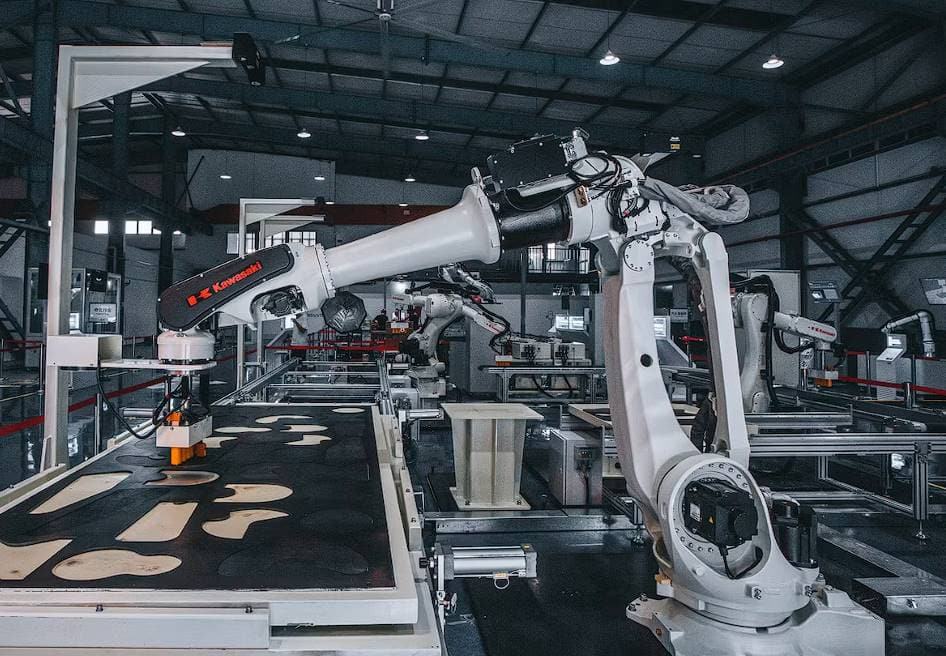
The Benefits of Computer Numerically Controlled (CNC) Machining
CNC machining's use in the auto sector has various benefits, such as
- Faster output times are possible with CNC machining as compared to conventional methods. Since it's a machine doing the work, it doesn't have to worry about becoming tired. This method is ideal for the rapid production of a large number of the same part since the computer instructions can be run as many times as needed.
- CNC machining is a computerised, automated process. Therefore, the likelihood of manufacturing errors is considerably diminished. The automotive business has stringent tolerance requirements. Therefore, precision is crucial.
- CNC machining jobs can be performed as often as necessary, making them ideal for mass-producing a single component. The repeatability factor is very useful in the automotive industry because components must be uniform from one batch to the next.
- Process simplification: CNC machines perform every production stage, allowing workers more time for creativity and design.
- Companies can save money thanks to CNC machining's efficiency.
Conclusion
CNC machining is a technical marvel that has changed how many industries produce high-precision components and complex designs. It is the backbone of several industries, from automotive and aerospace to medicine and electronics, allowing them to attain unprecedented efficiency and accuracy. The process involves drawing out the blueprints in a CAD programme, converting the design into a digital format, loading the machine with the desired material, and instructing the machine to manufacture the item. Machinists can generate CAD designs in a matter of days, speeding up the entire CNC manufacturing process. CNC machines can also be integrated into an assembly line, allowing for the simultaneous production of several items or all components for a single product.
CNC machining is widely used in the aerospace, automotive, marine, and electronics industries. It has many applications, from R&D prototyping to mass production. Examples of CNC-machined aircraft components include antennae, airfoils, landing gear, bushings, manifolds, electrical connectors, suppression materials, and radiofrequency suppression materials. CNC milling and lathe machines can make anything from large engine block components to small gears and panels. In the electronics industry, CNC machining has many advantages, such as its ability to reliably manage construction on a tiny scale.
CNC milling machines and routers are used to make consumer electronics, PCBs, housings, jigs, the production of semiconductors, silicon wafers, pipelines for supplying gas, flexible solder masks, the carrier wafer, heat dissipators, smartphones, and other electronics. CNC systems have various uses in various industries, from complex personalised designs for weapon bodies to interior components of a missile. Injection moulding can be used to make plastic parts, but CNC machining is required for all metal components and sophisticated ones. Injection moulding can be used to make plastic parts, but CNC machining is required for all metal components and sophisticated ones. The energy sector is growing due to progress in green energy and other forms of alternative energy.
CNC machining is used in the energy sector to produce parts for turbines, rods, and pins, bearings, water power plants, containers for generators, bushings, stands for solar panels, dental equipment, niche manufacturing, jewellery, shoes, and signage. CNC machines are also used in the jewellery industry for engraving and etching, polishing and grinding, shoe moulds, and signage. CNC machines are also used in the signage industry for aesthetic options and materials such as wood, aluminium, plastic, brass, acrylics, sheet metal, engineering and foam. CNC machining is used to create unique forms of materials, such as signage, hybrid manufacturing, and architectural and interior design. Hybrid manufacturing involves a 3D-printed base layer made of polymer, which is then fine-tuned and shaped using CNC machining.
This process speeds up production and reduces the need for hand assembly. CNC machining is a computerised, automated process used in the automotive industry for fast output times, precision, repeatability, process simplification, and cost savings. It is ideal for mass-producing a single component and has stringent tolerance requirements, making it ideal for mass-producing a single component. Companies can save money due to its efficiency.
Content Summary
- CNC machining has revolutionized the production of high-precision components and complex designs in various industries.
- Industries such as automotive, aerospace, medicine, electronics, and more rely on CNC machining for increased efficiency and accuracy.
- CNC machining uses computer numerical control (CNC) software and machinery to create three-dimensional objects from two-dimensional drawings.
- The process involves starting with a solid block of material and carving away excess to achieve the desired shape.
- CAD software is used to create blueprints, considering material requirements and machine constraints.
- CAM software converts the design into a digital format readable by CNC machines.
- Machinists load the machine with the material and ensure the necessary equipment is in place.
- The CNC program instructs the machine to manufacture the item.
- Machinists play a role in overseeing the process and making adjustments when needed.
- CAD designs can be quickly modified, allowing for the rapid creation, testing, and fine-tuning of 3D models or prototypes.
- CNC machines can be integrated into assembly lines, enabling simultaneous production of multiple items or components.
- The aerospace industry heavily relies on CNC machining for precise manufacturing of aircraft components like antennae, airfoils, and landing gear.
- CNC machining is widely used in the automotive industry for various applications, including R&D prototyping and mass production of components like gearboxes, axles, and valves.
- The marine industry utilizes CNC machining for the mass manufacture of boats, producing parts such as hulls, fittings, and furnishings.
- CNC machining is applied in the electronics industry for prototyping and production of components like PCBs, housings, and semiconductors.
- Smartphones are built using CNC manufacturing methods, with CNC machines used for creating components like casings, displays, and accessories.
- The defense industry relies on CNC machining for the production of complex designs, including weapon bodies and missile components.
- CNC machining is used in the healthcare industry for rapid tooling, injection molding, and the production of medical equipment such as implants and prosthetics.
- The energy industry utilizes CNC machining for manufacturing precision parts in sectors like oil and gas, wind turbines, and solar panels.
- CNC machining plays a significant role in the dental industry, producing dental prostheses, implants, and various specialized parts.
- CNC machining is widely employed in niche manufacturing sectors such as jewelry and shoe manufacturing.
- The signage industry utilizes CNC machining to reproduce any lettering style, size, or font, enabling precise replication of designs.
- Hybrid manufacturing combines 3D printing and CNC machining to produce complex geometries and intricate components with increased design freedom.
- CNC machining is utilized in architecture and construction for creating miniature replicas and producing architectural and interior design elements.
- Metal fabrication industries rely on CNC machining for cutting and shaping thick metal sheets using methods like wire EDM, laser, waterjet, and plasma cutting.
- CNC machining offers faster output times compared to conventional methods, making it ideal for rapid production.
- Precision is crucial in the automotive industry, and CNC machining reduces the likelihood of manufacturing errors.
- CNC machining allows for repeatability, ensuring uniformity of components in mass production.
- The automated nature of CNC machining simplifies the production process, giving workers more time for creativity and design.
- CNC machining improves efficiency, leading to cost savings for companies.
Frequently Asked Questions
In the medical industry, CNC machining is utilized for producing surgical instruments, implants, prosthetics, orthotics, dental devices, and other precise medical components.
CNC machining is crucial in the electronics industry for manufacturing circuit boards, connectors, enclosures, heat sinks, and other intricate components required in electronic devices.
The energy sector utilizes CNC machining for manufacturing turbine components, generator parts, oil and gas equipment, renewable energy systems, and other critical energy-related components.
CNC machining is essential in the defence industry for producing military equipment, firearms, armoured vehicles, aircraft components, and other specialized defence-related parts.
CNC machining is widely used in tooling and prototyping industries to create moulds, dies, fixtures, jigs, prototypes, and other tools required for manufacturing and product development.

